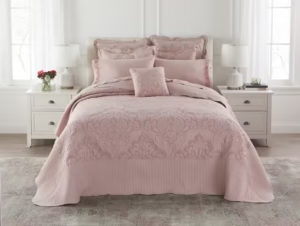When Emily bought her first house, it was everything she had dreamed of on paper—three bedrooms, a spacious kitchen, and a cozy backyard. However, after the excitement of moving in faded, she felt… a bit let down. The walls were bare, the rooms felt empty, and it did not have that comforting, “homey” feel she had hoped for. Walking through the rooms, she realized it was a nice house, but still just walls and floors. She wanted it to be where she felt completely herself, surrounded by things she loved and cherished memories. Over the next few months, Emily embarked on a journey to transform her house into a home. Through intentional decorating, personal touches, and a little DIY, she gradually created a space that felt uniquely hers. In doing so, she learned that turning a house into a home is less about the structure and more about how it makes you feel.
The Psychology of “Home”
The idea of “home” is deeply ingrained in human psychology. According to a study published in the Journal of Environmental Psychology, people have an innate need for a personal space that provides comfort, security, and identity (Journal of Environmental Psychology, 2022). This is why simply living in a well-furnished house does not necessarily make it feel like home. Small personal touches, memories, and familiar comforts make a house feel warm, inviting, and uniquely yours.
A survey by Havenly, a popular interior design service, found that 68% of homeowners believe that personalizing their space positively impacts their mental health (Havenly, 2023). These personal touches can range from family photos on the wall to souvenirs from trips, cherished books, or even a unique color scheme that resonates with one’s personality. Creating a home is about cultivating a sense of belonging and comfort in your surroundings.
Practical Tips for Turning Your House into a Home
While the journey to creating a true “home” is different for everyone, some tried-and-true methods make your space feel cozier and more personal. Here are some practical tips to help you transform any house into a place you feel at home.
- Personalize with Meaningful Decor
Adding personal decor items is one of the easiest ways to make a space feel like home. Consider items that bring you joy or reflect your personality and incorporate them throughout the house. A study by Houzz found that 60% of people feel more satisfied with their homes when they include personal mementos in their decor (Houzz, 2023). Whether it is family photos, artwork from local artists, or heirlooms, these pieces tell a story about who you are and add warmth to your space.
- Add Layers of Comfort with Textiles
One of the simplest ways to make a home feel inviting is to add layers of comfort with textiles. Rugs, throw pillows, blankets, and curtains create a sense of coziness that hard furniture alone cannot achieve. According to Better Homes & Gardens, soft textiles make a room feel “lived-in” and comfortable, turning any space into a haven (Better Homes & Gardens, 2023). Try layering different textures—like a woven rug with a soft throw blanket—to add depth and warmth to a room.
- Use Lighting to Create Ambiance
Lighting plays a crucial role in setting the mood in a home. Harsh overhead lights can make a space feel cold and unwelcoming, while softer lighting can create a warm and inviting atmosphere. In a 2021 survey by Philips Lighting, 73% of homeowners said lighting significantly impacted how comfortable they felt in their homes (Philips Lighting, 2021). Use table, floor, or string lights to create ambient lighting that makes each room feel cozy and intimate.
- Incorporate Scent and Sound for Sensory Comfort
Creating a home is about what you see and how the space makes you feel. Research shows that certain scents and sounds can evoke a feeling of comfort and relaxation. For instance, a study published in the Journal of Cognitive Psychology found that lavender and vanilla scents can help reduce stress levels by up to 40% (Journal of Cognitive Psychology, 2022). Add candles, diffusers, or essential oil sprays to introduce calming scents. Similarly, playing gentle background music or nature sounds can enhance the homey feeling.
- Add Greenery and Natural Elements
Plants bring life and color to any space. A study from NASA showed that indoor plants improve air quality by removing toxins, and a separate study from the American Psychological Association found that people who add plants to their homes feel more connected to nature and report higher levels of well-being (American Psychological Association, 2021). Houseplants like snake plants, pothos, and succulents are easy to care for and add a touch of nature to your home.
Case Study: Emily’s Transformation
After months of working on her house, Emily’s home transformation was complete. She added family photos and mementos from her travels on a gallery wall in the living room, bringing back memories every time she looked at them. She layered her couch with soft throw blankets and pillows, making it the perfect spot to unwind after a long day. String lights in the bedroom created a soft evening glow, and her diffuser filled the rooms with her favorite lavender scent. She even started growing a few low-maintenance houseplants, adding a fresh, vibrant energy to her space.
Not only did these changes make Emily’s house feel more personal, but they also made her happier. A Home Improvement Research Institute study found that 78% of people feel more satisfied with their lives when they are happy with their home environment (Home Improvement Research Institute, 2023). Emily was no exception. She finally felt that her house was more than just a place to sleep—it was her sanctuary.
Why “House to Home” Matters
Turning a house to home is not just about aesthetics; it has a tangible impact on mental health and well-being. The American Psychological Association reports that people who feel attached to their homes have higher levels of happiness and lower levels of stress (American Psychological Association, 2021). Our surroundings affect our mood, productivity, and overall sense of peace.
This concept has become even more important with so many people working from home. A Statista survey from 2022 found that 44% of remote workers made at least one change to their home environment to create a more comfortable workspace (Statista, 2022). This statistic highlights how people are investing in their homes to make them functional and places where they feel truly at ease.
Final Thoughts: The Journey from House to Home
Turning a house to home is a journey, not a destination. It does not require a huge budget or a total makeover; it is about making small changes that reflect your personality, bring you comfort, and make you feel at peace. The little touches make all the difference, whether through family photos, cozy textures, ambient lighting, or favorite scents.
For Emily, this journey transformed her living space into a sanctuary—a place that felt like an extension of herself. Her story is a reminder that a home is more than just four walls; it is a place of comfort, security, and joy. So, take the time to make your house a home. You will create a space you love and one that loves you back.






